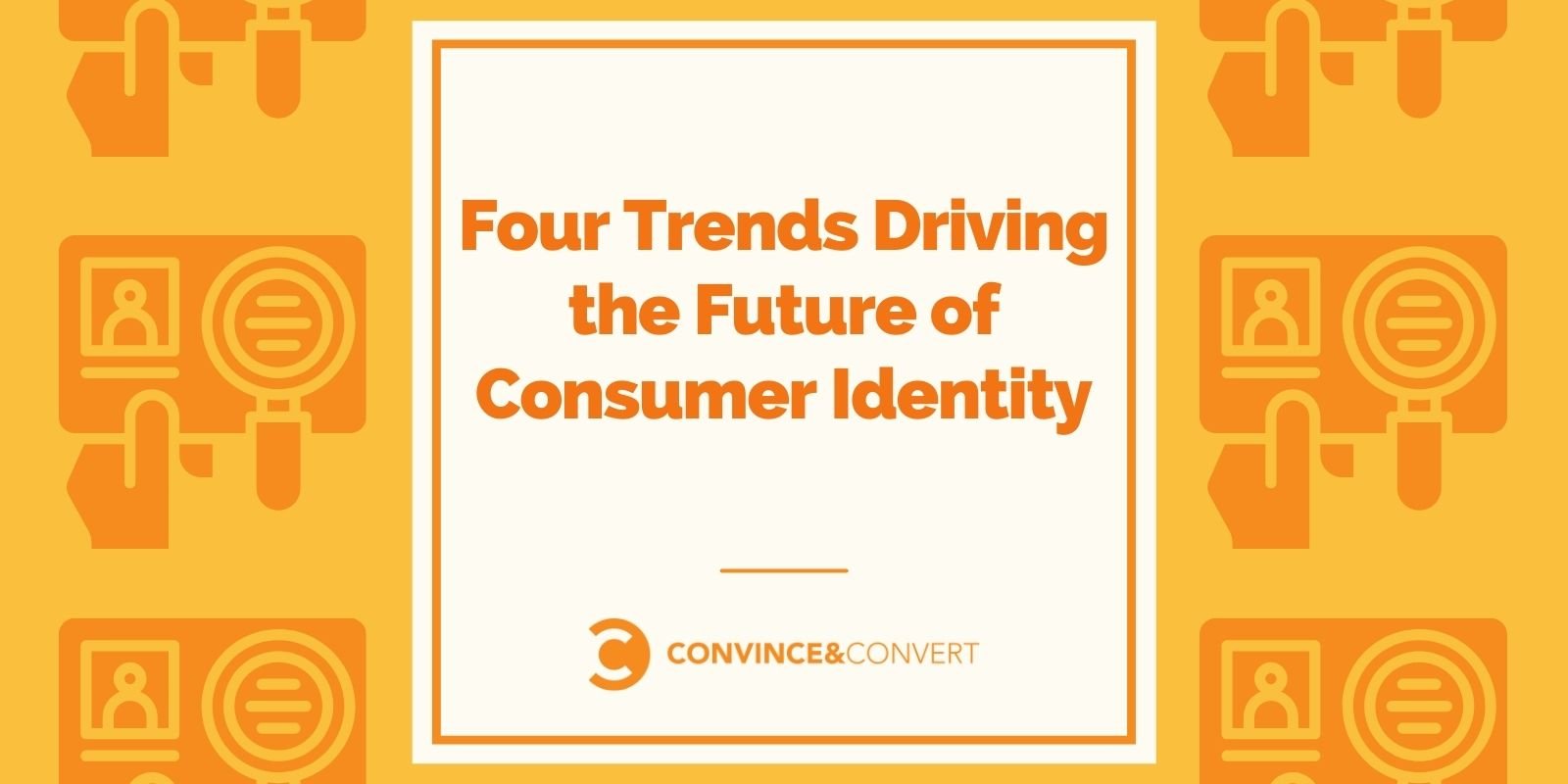Data privacy and consumer identity have been topics of conversation in the ad tech industry for a long time now. With the widespread use of the internet and the desire for companies to be more transparent with their motives, consumers are getting smarter about how their data is gathered online. This new insight has sparked countless debates over what resources are and aren’t acceptable for companies to use and has led to big-name platforms, such as Apple and Google redefining their privacy policies.
Advertisers are able to reach consumers in new and meaningful ways with so many online channels at their disposal. However, the promise of value-based advertising has fallen short, with several voices calling for changes to the way consumer identity data is handled.
Trends such as consumer action, privacy regulations, the abolishment of third-party cookies, and the rise of the walled garden have all contributed to the rapidly changing landscape of the ad tech industry, and have made it important for companies to innovate their data and identity strategies.
There are currently four trends driving the future of consumer identity that marketing professionals should keep top of mind as they continue improving the brand/consumer relationship:
The Consumer is More Than a Participant
With so many data-driven insights comes the tendency for brands to shift away from human-based marketing and instead seeing consumers as cookies, cohorts and user IDs. By taking data gathered from consumers to best target them based on their personal wants and needs, companies hope to connect with their audience in more relevant ways.
While the average consumer values personalized marketing, they’re getting much smarter in their ability to recognize what’s truly valuable and what’s simply noise. As consumer behavior changes, brands must shift towards a conversation-based approach instead of seeing consumer engagement as an end goal to be reached.
With the introduction of AI-based technologies comes the eagerness to automate consumer processes. Brands should be careful in taking this approach. Simply automating all processes can take away the dynamic and responsive aspects of marketing that consumers have come to value.
Instead, companies looking to evolve with consumer wants should be integrating AI with pre-existing ideas of human creativity and intelligence to bring to life answers to the questions consumers search for. Implementing a creative ad tech system helps to streamline and automate across the creative process, allowing brands to marry large-scale personalization with consumer wants and needs.
Due to the boom of social media, consumers can connect with brands at various touch points across the customer journey.
Instead of a blanket advertising approach, brands must take into account the fact that the vast majority of consumers are likely to make a purchase from a brand that puts effort into personalized marketing. Utilizing a creative personalization solution has the power to create 1:1 personalized experiences at the level the market has grown to demand.
Navigating Consumer Identity Privacy
The momentum around consumer privacy regulations has grown in recent years. Privacy regulations such as CCPA and GDPR require the consent of users and a designated opt-out policy and give consumers the right to demand their data be corrected if inaccurate.
Ultimately, these laws require brands to be transparent about how they collect, use and share customer information, bringing even more attention to how consumer data is being handled.
Brands need to take a proactive approach toward data privacy in order to avoid serious consequences.
Identity solutions, such as LiveRamp’s RampID and Unified ID 2.0 (an open-source ID framework using consumers’ anonymized email addresses gathered from a user logging into a website or app), offer brands a way to personalize communications with their audiences across all media channels while still adhering to privacy regulations via acquired consent.
Identity and consumer privacy will continue to be major themes across the industry for years to come. Combining data-driven identifiers with creative automation platforms allows companies to set themselves up for long-term success. They must ensure that they’re still meeting consumers at the right places with the right messaging with privacy in mind.
Cookie and Device ID Deprecation
Consumers have been standing up to demand more fairness and transparency for their privacy online. Browsers and device manufacturers have also been on the same page.
With Google’s decision to moving away from third-party cookies (now delayed until 2023) and Apple integrating key privacy changes into their iOS 14.5, players in the direct-to-consumer market are creating big disruptions in the data-driven advertising space.
The industry is quickly pivoting from a world of ubiquitous consumer data to one where it’s significantly more controlled, managed and safeguarded. These changes leave brands little choice but to turn away from traditional advertising methods and find new ways to harness consumer data, such as first-party cookies through privacy compliant technologies.
Companies should keep in mind that traditional use cases for third-party cookies won’t simply disappear, but will instead evolve.
By maxing out the value of first-party data to effectively personalize experiences for consumers, brands will be in a better position to ride out these changes and evolve with the industry. These changes may seem daunting to an industry that has depended on third-party cookies and device ID methods for decades, but a shift towards first-party data offers an opportunity for companies to take a step back and really dig into their personalization strategies to best optimize their consumer relationships.
Walled Garden vs. Open Web
The walled garden ecosystem is growing rapidly as big players such as Amazon and Facebook erect walls to protect their data and assets. These walled gardens are incredibly disruptive to the future of data-driven advertising, as they block the gathering of data from any outside advertisers. There has been conversation around publishers and ad tech companies banding around a new unified ID, however, it’s too soon to tell whether these efforts will be fruitful.
According to a 2020 Harris Poll, online users spend 66% of their time on the open web, and 34% behind walled gardens. However, the open web-only accounts for 40% of total ad spend, whereas 60% of brands are putting their money behind walled gardens in the hopes of reaching more consumers.
For publishers and marketers to survive this large-scale shift of content to closed ecosystems, companies need to improve their first-party data and bolster their direct relationships with consumers instead of relying on platforms such as Google and Facebook to connect them.
Between You and Me
Advertisers who have consistently viewed cookies as the end-all-be-all for personalization tactics are going to have to get smart about their next move. Respecting consumers’ desire for privacy, shifting to a first-party data strategy and recognizing customers as more than just a one-size-fits-all audience are all great steps towards creating a trusted, lasting brand. There’s plenty of opportunity for outside-the-box solutions if only companies are willing to take the leap.
About the Author:
Naren Nachiappan, as Jivox’s Chief Customer Officer, leads a global organization in customer acquisition and retention. As CCO, he is also devoted to the pursuit of our customers’ success, by developing and owning key operational metrics, including customer satisfaction, retention and profitability. Naren comes to Jivox from Wind River (NASDAQ: WIND), where as Vice President and General Manager, he was a part of the executive team responsible for reigniting growth and adding over $100 million to the top line in three years. Naren was directly responsible for taking the Device Management business from a concept to a multimillion-dollar revenue rate in under 9 quarters. Earlier in his career, as CEO of Proceler and as Senior VP at VenturCom (acquired by Citrix), he was responsible for pioneering several industry innovations such as ‘the first support for automated application acceleration using hybrid SoCs’ which resulted in Proceler’s nomination for the 2001 MPR Analysts choice award, and the first flight-essential certified UNIX for avionics applications on the Boeing 777. Naren graduated cum laude from Harvard University and holds an MBA from the UC Berkeley Haas School of Business.
The post Four Trends Driving the Future of Consumer Identity appeared first on Content Marketing Consulting and Social Media Strategy.




